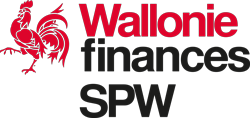Tax on sites for which economic activity has been abandoned (abbreviation: T.S.A.E.D.) aims to tackle sites that constitute visual pollution.
Its aim is to help eradicate industrial wastelands or others areas that have been abandoned. These repel investors and reduce the economic appeal of Wallonia.
The T.S.A.E.D. is an indexed annual tax that concerns the maintenance of these sites. For it to be taxable, the site must have certain characteristics (see Conditions).
The following types of land are exempt from the tax:
- waste tips;
- technical landfill centres;
- sites for which rehabilitation works are managed by the Walloon government, via an operator;
- mines and quarries;
- abandoned railways.
Waste tip and mine and quarry outbuildings are not exempt from the tax.
The tax period for T.S.A.E.D. corresponds to the taxable period. The T.S.A.E.D. amounts to:
- € 550.00 indexed (2024 tax period: 831,94 € - 2025 tax period: 863,09 € ) per acre of taxable built area;
- €70.00 indexed (2024 tax period: 105,87 € - 2025 tax period: 109,83 € ) per acre of taxable non-built area.
Any fraction of an acre is counted as one unit
The owner, or the individual who has the right of use for all or part of a site for which economic activity has been abandoned, is liable for the tax.
The tax is established after the second time an infringement is observed, as provided for by the taxation procedure outlined below.
1. Potentially taxable sites are identified by the SPW Land, Housing, Heritage and Energy departments and sent to the Walloon tax administration so that the site can be visited and the tax can potentially be applied.
2. The relevant SPW Tax department will then send a notice to the owner. This informs them that an initial visit will take place at their site.
3. The inspection agent will visit the site and make an initial observation, which they will send to the taxpayer within 60 days of the visit.
4. The taxpayer has one month to make any remarks.
5. After the initial observation, the owner has a period of nine months to renovate the site. After this deadline, a second inspection is carried out. If the abandoned site is still in the same condition, the tax will be due from 1 January of the year in which the second observation occurred.
6. The tax is recorded in June of the year following the tax period.
7. In subsequent years, the site is presumed to be in the same condition and therefore remains taxable until the taxpayer makes the restoration of the site known.
In the event of a dispute:
Any claim must be justified, signed and submitted, under penalty of forfeiture, within six months, at the latest, of the effective date of the tax notification of the taxpayer or the person for whose assets the tax is due for collection (as calculated in accordance with Article 5, Section 3 of the Decree of 6 May 1999 regarding the establishment and recovery of Walloon regional taxes and disputes arising therefrom), in accordance with Article 35-ter of the same decree, to the Director of litigation and the Administrative litigation department of SPW Tax, by post to the following address: Boulevard Ernest Mélot 30 - 5000 Namur or by email to fiscalite.wallonie@spw.wallonie.be.
For it to be taxable, the site must have certain characteristics:
- the cadastral plot must have a surface area that is greater than 1,000 m2;
- the site must have been the location of industrial, artisanal, agricultural, commercial or service-based economic activities;
- the site must include at least one abandoned building, which has not been repurposed, with one or more of the defects referred to in the decree (damage to external walls, chimneys, roofs, carpentry, ledges or gutters).
